Fruit and Vegetable Peels: 30+ Clever Ways To Use Your Leftover

So I was wondering what other vegetable peel uses we could be doing with the peels and trimmings from our fruits and vegetables.
As a result, I decided to do some tasty research. Here’s what I discovered.
Fruit and vegetable peels can be used in a variety of ways. Cleaning products, face washes, handmade stock, and natural colors are all possible to manufacture. You can also whiten your teeth, reduce dark bags under your eyes, and do a lot more!
So let’s take a look at all of the different uses for fruit and vegetable peels, as well as the most often asked questions regarding them.
27 Uses for Fruit and Vegetable Peels You Probably Didn’t Know About
1. To whiten teeth, use the peel of an orange or lemon
Citrus includes acid, and citric acid is excellent for brightening and whitening teeth! Simply rub the rind (inside) on your teeth for 1 minute before rinsing with water. You may also make a natural whitening paste by grinding or finely shaving lemon peel and mixing it with baking soda and water. Avoid rinsing with lemon juice, which can cause teeth to lose calcium by overloading them with citric acid.
2. Cucumber peels for ant control
Cucumbers irritate ants. So peel a cucumber and use the cut side of the peel to clean any spots where ants are visible. The cucumber’s odor will deter ants. Then, to take your natural pest control a step further, place cucumber peels near any entry point for ants, such as a crack, window, or door.
3. Use an air fryer or a food dehydrator to turn apple, potato, sweet potato, and other veggie peels into chips
Fresh fruit or vegetable chips are delicious and nutritious snacks. You may use a food dehydrator or an air fryer to turn what would otherwise be wasted into a delightful and nutritious snack, whether it’s an apple, potato, or sweet potato.
4. To make a spice rub, grind lemon or orange peel
Lemon goes well with fish, and orange goes well with chicken or pig. So take your old lemon or orange peels and dehydrate them in a food dehydrator or bake them at 270° on a baking sheet. Once the peels are dry and brittle, crush them into a fine powder with a mortar and pestle or a clean coffee grinder.
You can leave it as is or add salt and pepper to make your own spice combinations. Old empty spice jars, zip lock bags, or miniature Tupperware are ideal storage options.
5. Clean your coffee pot with lemon peel
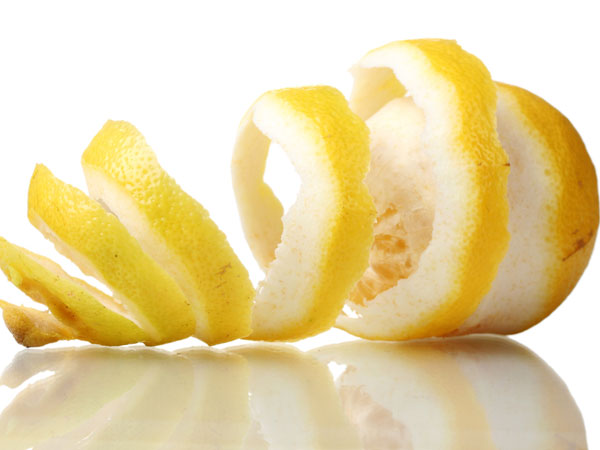
Hard water and other contaminants in the water leave residue in coffee pots. Fill the carafe with water after removing the filter, and fill the coffee maker halfway with water. Place lemon peels in the carafe that has been left empty.
Switch on the coffee machine. The lemon peels will release their citric acid as the hot water fills the carafe, which naturally cleans and is antibacterial. After it’s finished, remove the peels and re-run the water through the coffee machine. Then rinse twice more with plain water.
6. For an immediate sheen, wipe your plant leaves with a banana peel
Who doesn’t appreciate gleaming plant leaves? Misting and spraying plant leaves, on the other hand, encourages mold growth. Instead, take a banana peel from a newly peeled banana and wipe down the leaves of each leaf with the flesh side.
7. For a face scrub, use avocado peels (the insides)
Avocado peels are a great way to exfoliate your skin. Gently touch the skin with the inside of the peel (a little leftover avocado flesh also works). It’s especially beneficial for rosacea and other dry skin conditions. Every rub contains Vitamin C, A, B6, and some fatty acids from the avocado.
8. Lemon peel can be used to help remove hard water stains from pots and pans
Fill your pots and pans with lemon peels. Fill the pot halfway with water and bring to a boil over high heat.
Allow 5 minutes for the water to boil before pouring it out and scrubbing the spots away (carefully as the pot will be hot). Have you got burnt-on stains? To help get rid of the burned food adhered to the bottom of the pans, add a little baking soda to the water (in addition to the lemon).
9. Creating natural food color or colors
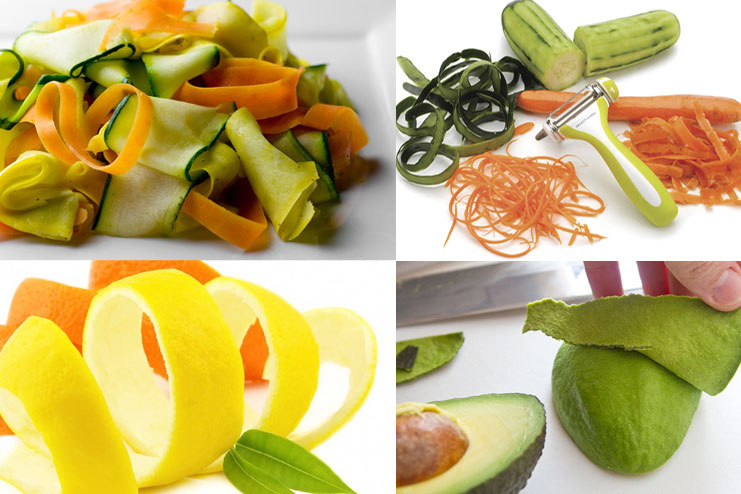
Bright colors appeal to children. But you know what they shouldn’t be consuming in excess? Artificial colors, to be sure. Thanks to government regulation, our country used to have over 80 approved artificial hues, and we’re down to seven now.
The University of Southampton in England did a thorough investigation of the link between artificial colors (such as those found in mac n’ cheese, MnMs, and Cheetos) and Attention Deficit Hyperactivity Disorder (ADHD).
Consumption of artificial colors was linked to “a considerable rise in ADHD-type behavior, including impulsive behavior and loss of focus,” according to the researchers. Use onion, beets, red cabbage, orange, or lemon peels to generate all-natural dyes for everything from baked products to jello to Easter egg dyes when it makes sense.
10. To get rid of dark circles beneath your eyes, use potato peels
Peel the potatoes and chill the slices for at least 30 minutes in the refrigerator or 10 minutes in the freezer. Place the cooled slices over your eyes and close your eyes for 10 minutes while lying flat on a bed or the floor. This might help to minimize puffiness and dark circles beneath the eyes.
11. Use orange peels to keep brown sugar moist
We’ve all tried to utilize brown sugar only to discover it’s as hard as a rock. Pour brown sugar into a Tupperware container or another airtight container to keep it fresh. Place 1 or 2 pieces of orange peel in with the sugar before sealing. Brown sugar will be as good as new in 2-3 hours!
12. Use practically any vegetable peels or skins to make vegetable stock
Nothing like the taste of fresh, handmade stock or broth. Sugars, starches, and other chemicals are frequently added to canned soup to keep it shelf-stable or artificially enhance the flavor. So, in a large saucepan of water, bring the skins of garlic cloves, onions, potatoes, carrots, and other vegetables to a boil.
Simmer for 45 minutes after seasoning with salt and pepper. Remove the particles and place them in a big heat-resistant container in the fridge or freezer. Start by sautéing the veggie scraps in olive oil for 5 minutes before transferring them to the saucepan with water for a deeper flavor.
13. Use apple, orange, or lemon peels to make tea
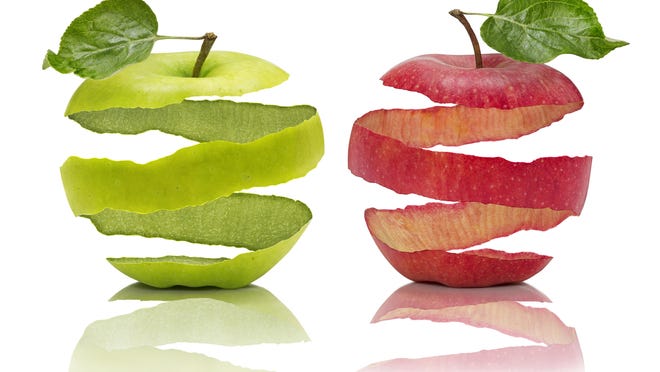
In a saucepan of water, steep some black or green tea bags. Then toss in some orange, lemon, and apple peels. Also, a cinnamon stick would be an excellent addition. Bring the pot to a boil, then reduce to low heat and leave it to simmer for 5 minutes before steeping for another 5 minutes. Remove and discard the solids before serving.
14. In pitchers of water, add apple, lemon, cucumber, and orange peels
You’ll see it in spas all around, but putting lemon, apple, orange, or cucumber peels in with the water in a large vessel or pitcher is a terrific way to add taste and another great vegetable peel application.
15. For a martini garnish, save lemon, orange, cucumber, or apple peels
Who doesn’t like a good cocktail once in a while? Use a twisted piece of lemon or orange peel to garnish your martini, or go for an apple for your next apple martini!
16. Use potato, carrot, or other root vegetable peels to make fritters
Fritters are a mainstay of southern cuisine. Make your own from the peels of potatoes and carrots, as well as the outer skin of onions. Scoop into little balls and cook in heated oil for a minute or two, flipping after a minute or two. 2 1/2 cups finely chopped peels, 1/4 cup flour, two eggs, and whatever seasonings seem delicious with your veggie mix (maybe salt, pepper, and garlic powder).
17. Make your orange peel potpourri

Potpourri is the best way to make a house smell good. Unfortunately, many store-bought potpourris contain chemicals and artificial fragrances that can worsen allergies.
Allow the peels of oranges and lemons to dry naturally on a window sill for a few days. In a bowl, combine dried flowers, pinecones, and seed pods in any configuration. A couple of cinnamon sticks, a handful of cloves, and one or two nutmeg pods (or just a pinch of ground nutmeg). Add a few drops of orange essential oil from the food shop to intensify the aroma.
18. Use orange and lemon peels in your mulled wine
Mulled wine is simply wine that has been gradually cooked with extra ingredients, producing a drink that is likely related to sangria. With two bottles of wine, the peels of a couple of oranges or lemons, in a large pot on the stove, almost anything can be added to that, such as:
- A stick of cinnamon
- Cloves in their entirety
- A pod of vanilla
- One c. port or brandy
Add up to 1/2 cup sugar or honey to make a sweeter wine, and keep it at a low simmer, not a rolling boil. Remove from heat and let soak for a few minutes. The flavor gets stronger as you steep it longer.
19. It goes without saying that all vegetable and fruit peels make excellent compost
If you have your own garden, making your own compost is a terrific way to recycle all of your fruit and vegetable waste. Composting food waste is as much an art as it is a science. Take the guesswork out of it with the Envirocycle - quite possibly the cutest composter in the world, a highly rated composter on Amazon. The Envirocycle has hundreds of nearly excellent reviews. It also comes with free delivery, is BPA-free, and requires no assembly!
20. Make a citrus-based cleanser with orange peels
We’ve all seen and used products like Citrisolve, so we’re familiar with citric acid’s cleaning abilities.
While you can certainly buy it, why not make your own with those peels? Fill a big mason jar halfway with orange or lemon peels. Finish with a splash of white vinegar. Place a date on the jar and set it aside for two weeks at room temperature. Strain the peels and dilute with ordinary water 1 to 1. Using a clean, empty spray container, pour the liquid into the spray bottle for simple cleaning.
21. To keep copper pans from tarnishing, rub a lemon peel over them
Copper pots tarnish badly, as everyone who has ever used them in the kitchen knows. Scrub the copper with the inside of a lemon peel to remove the tarnish. Sprinkle a small amount of baking soda on the peel for extremely difficult tarnish.
22. Polish your shoes with a banana peel
A banana peel, similar to how it may be used to polish plant leaves, can also be used to shine shoes. Simply rub on leather dress shoes with the flesh side of the peel, and apply a short buff with a dry towel afterward for even more luster.
23. Freeze lemons and oranges after zesting them
Orange and lemon zest are used in a variety of dishes. The issue is that if we zest one and don’t utilize the remainder of the orange or lemon right away, they might go rancid quickly, even in the fridge. So, if you’re going to use an entire lemon or orange, go ahead and zest the skin into a dish. Place the zest in a small Tupperware container or a small ziplock bag and freeze it until needed.
24. For infused oils, add lemon peel to bottles of olive oil
Infused oils are a fantastic way to give your meals a little something extra. While virtually anything (rosemary sprigs, garlic cloves, pepper flakes, etc.) can be used to infuse olive oil, lemon or orange peels also work well.
Simply place the peels in the bottle of oil and soak them thoroughly. To avoid mold, we want the peels (or other materials) to be totally submerged in the oil, as with any infused oil. If the oil falls below the level of the peels, either top it up with extra oil or remove the peels. Warm the oil and peels in a pot on the stove to intensify the taste, then pour back into the bottle (either with or without the peels).
25. Scrub a grease spill using lemon peels and a little baking soda
Greasy messes are unavoidable in the kitchen. While some dish liquids are effective at removing grease, baking soda and a lemon peel are an excellent combo for doing so. After that, all you have to do is wipe it clean with a sponge.
26. To use as a facial scrub, pour sugar or salt onto the soft side of a banana peel
Let’s be honest. We don’t seem to be growing any younger! However, you may give yourself a facial with the inside side of a banana peel and possibly lose years off your appearance (or not). To exfoliate and moisturize your skin, combine some sea salt or sugar on the flesh side of the banana peel and gently rub it on your skin.
27. Scrub soap scum and water stains in the bath using a lemon half or peel dipped in salt
Soap scum, tub rings, and hard water stains are all common in the bathroom. You may scrape soap scum and other bathroom stains away using lemon peel and a little salt or baking soda, just like we did with other issues.
Is it possible to recycle vegetable peels?
If you’re talking about regular curbside recycling, which usually collects paper, plastic, and glass, the short answer is no. That would not include food waste. Food waste can certainly be included in your city administration and offers curbside compost pickup, which is becoming more common.
Keep in mind that food waste attracts rats and vermin, so composting food scraps at the curb may not be worth the effort. You may decide to use curbside service only for grass debris or dirty paper items such as pizza boxes. Anything that was once living, however, can be composted.
Is it true that vegetable skin is healthy?
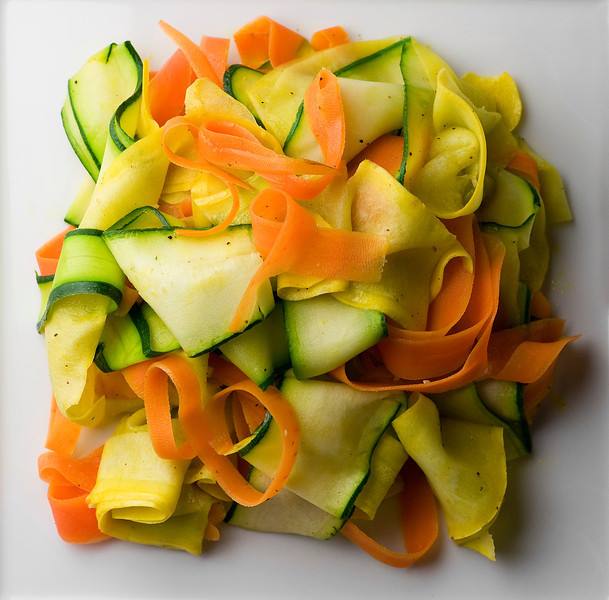
Yes, in a nutshell. The skin and peel of most vegetables contain more nutrients than the flesh of the veggie. While peeling some fruits and vegetables makes them more appealing and delicious, leaving the peels on will give you more nutritional bang for your cash.
Most vegetable peels have much more antioxidants and fiber than the rest of the vegetables.
The skin, for example, contains up to 31% of the total amount of fiber in a vegetable, according to the National Institutes of Health. Furthermore, the peel of the fruit contains up to 328 times more antioxidants than the inside of the fruit.
The peels of the following fruits and vegetables provide the most nutrition
- Apples
- Potatoes
- Cucumbers
- Eggplant
- Mangos
- Carrots
What can I do with the peels of an avocado?
Avocado nutrients are concentrated in the dark green sections of the fruit where the flesh meets the peel. When compared to the pale green sections, this has the most carotenoids and chlorophylls, both of which aid in the battle against free radicals and cancer.
Avocado peels also have a higher concentration of phenols and flavonoids. Both phenols and flavonoids have numerous health benefits, including the prevention of nerve degeneration. While avocado peels are healthy, most of us aren’t going to be eating them anytime soon.
So, what else can you do with them besides throwing avocado peels in the trash or composting them?
For starters, when eating an avocado, scrape as near to the skin as possible to get the most nutrients out of it. The peel of some avocado cultivars, such as the Mexicola, is soft enough to eat. However, most of us are familiar with the Haas avocado, which has a rough, leathery exterior that isn’t particularly appealing. Having said that, you can use the peel as a face scrub by scraping the interior of the peel (where the fruit was).
Are tomato peels harmful to your health?
Because the skin of tomatoes does not break down in our stomachs, canned tomatoes are frequently labeled as “peeled.”
Tomato skins, on the other hand, aren’t toxic or “bad for you.” Tomato peels also contain a significant proportion of the carotenoids seen in whole tomatoes. The majority of flavonols, which have been demonstrated in tests to inhibit bacterial development, are found in the skin. As a result, most experts think that the skin of tomatoes should be eaten. Furthermore, peeling them is a chore!
Is it true that the apple skin is the healthiest component of the fruit?
Definitely!
A plain apple with skin has 115 percent more vitamin C than a plain apple without skin, according to SELFNutritionalData.
Vitamin K levels have increased by 332 percent.
The amount of vitamin A in your body has increased by 142%.
Peeled apples provide roughly 20% more calcium and potassium than raw apples with skin.
What does the skin of fruits and vegetables contain?
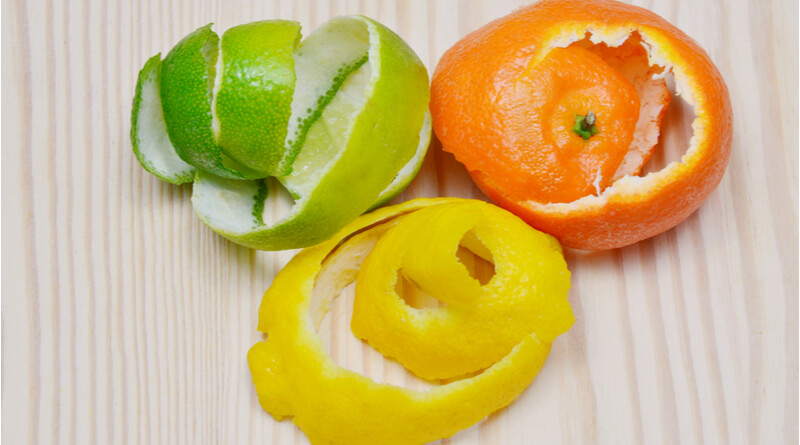
Colors in fruits and vegetables are highly beneficial to our health. Most of the time, the color is concentrated in the peel. These peels’ color is frequently a vital source of phytochemicals.
According to the American Institute for Cancer Research, phytochemicals are “the cancer fighters in your foods.” Vegetable peels are a particularly good source of fiber. Fiber is beneficial to our digestive and intestinal systems in general.
Pectin is abundant in other types of peels, particularly apple peels. Pectin is a soluble fiber that has been demonstrated to help fight or prevent cancer by lowering blood cholesterol, controlling blood sugar, and lowering blood sugar.
According to studies, apples with the skin have a considerably more significant impact on cancer cells than peeled apples. This is most likely owing to the apple skin’s high antioxidant content. Potatoes, like apples, have much more iron, potassium, fiber, and B vitamins than peeled potatoes. They also have significantly more antioxidants than peeled potatoes.
As a result, eat your vegetables with the skin on!
Is it necessary to peel a cucumber’s skin?
Cucumber is one of the fruits and vegetables that I eat with the skin still on. In the case of cucumbers, I find that the skin holds the cucumber together better than the inside, which can quickly become mushy. And, while I enjoy cucumber’s flavor in general, I particularly enjoy the bite I get from the cucumber’s peel.
Of all, the skin of a cucumber contains a lot of nutritional value, so while you can peel it if you want, I think it’s unnecessary.
Have I mentioned all of the vegetable peel applications you were looking for?
In this post, we looked at the numerous ways you can use the peels, crumbs, and fragments from fruits and vegetables that don’t make it into your final meal. This stuff doesn’t have to go in the trash or down the garbage disposal. Uses for vegetable peel can save you time and money while also adding flavor to other recipes. As a result, don’t dismiss the waste from your kitchen. Think outside the box.











